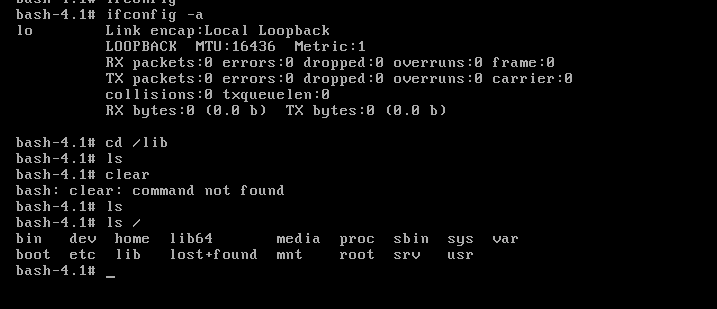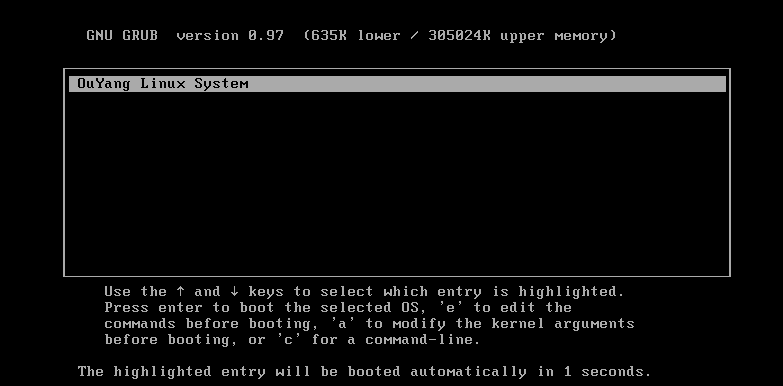Linux裁剪之定制系统
听到这个标题也许会让人认为不可思议,怎么可以定制自己的系统呢?是的。这就是Linux为什么一直深受广大系统爱好者青睐之一,它可以根据自己的需求来定制自己想要和不想要的。本文就从最基础的开始来搭建属于自己的一个小型OS,并且能够实现开机自动加载网卡,配置IP与其他主机通信。本文暂不做内核编译的操作,不过会在之后陆续补上,尽请期待!
实验环境; 宿主机:Centos6.5-64位 目标主机:Centos6.5-64位
1、为宿主机添加一块新的20G硬盘,特命名为;testlinux6.5.vmdk(由于目标主机是通过宿主机的sdb硬盘来启动,故在此宿主机上添加一块新的硬盘)
下图为硬盘信息;
Disk /dev/sdb: 21.5 GB, 21474836480 bytes 255 heads, 63 sectors/track, 2610 cylinders Units = cylinders of 16065 * 512 = 8225280 bytes Sector size (logical/physical): 512 bytes / 512 bytes I/O size (minimum/optimal): 512 bytes / 512 bytes Disk identifier: 0xe0c1f6c9 Device Boot Start End Blocks Id System
2、为新添加的硬盘分区格式化以及创建文件系统ext4
fdisk /dev/sdb磁盘分区;
Disk /dev/sdb: 21.5 GB, 21474836480 bytes 255 heads, 63 sectors/track, 2610 cylinders Units = cylinders of 16065 * 512 = 8225280 bytes Sector size (logical/physical): 512 bytes / 512 bytes I/O size (minimum/optimal): 512 bytes / 512 bytes Disk identifier: 0xe0c1f6c9 Device Boot Start End Blocks Id System /dev/sdb1 1 26 208813+ 83 Linux /dev/sdb2 27 91 522112+ 83 Linux
3、格式化新建的硬盘分区,并且为两个分区创建挂载目录
[root@station103 ~]# mke2fs -t ext4 /dev/sdb1
[root@station103 ~]# mke2fs -t ext4 /dev/sdb2
[root@station103 mnt]# mkdir -pv /mnt/{boot,sysroot}
4、先把/dev/sdb1挂载到/mnt/boot/目录下
[root@station103 ~]# mount /dev/sdb1 /mnt/boot/ [root@station103 ~]# mount /dev/sdb1 on /mnt/boot type ext4 (rw)
5、为新的磁盘分区sdb1装入grub;
[root@station103 ~]# grub-install --root-directory=/mnt /dev/sdb Probing devices to guess BIOS drives. This may take a long time. Installation finished. No error reported. This is the contents of the device map /mnt/boot/grub/device.map. Check if this is correct or not. If any of the lines is incorrect, fix it and re-run the script `grub-install'. (fd0) /dev/fd0 (hd0) /dev/sda (hd1) /dev/sdb [root@station103 ~]# ls /mnt/boot/ grub lost+found [root@station103 ~]#
6、复制宿主机的内核至新磁盘分区上sdb1挂载的/boot目录下;
[root@station103 ~]# cp /boot/vmlinuz-2.6.32-431.el6.x86_64 /mnt/boot/vmlinuz [root@station103 ~]# cp /boot/initramfs-2.6.32-431.el6.x86_64.img /mnt/boot/initramfs.img [root@station103 ~]# cd /mnt/boot/ [root@station103 boot]# ll total 21074 drwxr-xr-x 2 root root 1024 Feb 22 23:32 grub -rw------- 1 root root 17437215 Feb 22 23:36 initramfs.img drwx------ 2 root root 12288 Feb 22 23:23 lost+found -rwxr-xr-x 1 root root 4128368 Feb 22 23:36 vmlinuz
7、挂载sdb2至/mnt/sysroot下,并且创建目标所需的根文件;
[root@station103 ~]# mount /dev/sdb2 /mnt/sysroot
[root@station103 ~]# mkdir -pv /mnt/sysroot/{etc/rc.d,usr,var,proc,sys,dev,lib,lib64,bin,sbin,boot,srv,mnt,media,home,root}
[root@station103 ~]# cd /mnt/sysroot/
[root@station103 sysroot]# ls
bin dev home lib64 media proc sbin sys var
boot etc lib lost+found mnt root srv usr
8、在宿主机上移植bash的二进制的可执行文件及库文件至目标主机的根文件系统;(此处用的脚本实现,不做多的介绍.)
[root@station103 etc]# ./bashcp.sh Enter a command: ls Enter a command: ifconfig Enter a command: ping Enter a command: mv Enter a command: cp Enter a command: cat Enter a command: mkdir Enter a command: bash Enter a command: useradd Enter a command: chmod Enter a command: chown Enter a command: reboot Enter a command: insmod Enter a command: exit Enter a command: quit
9、查看下刚刚复制的命令,并且为/mnt/sysroot/bin创建链接文件;
[root@station103 etc]# chroot /mnt/sysroot bash-4.1# ls bin dev home lib64 media proc sbin sys var boot etc lib lost+found mnt root srv usr bash-4.1# cd /bin bash-4.1# ls bash cat chmod chown cp ls mkdir mv ping bash-4.1# cd /sbin bash-4.1# ls ifconfig insmod reboot [root@station103 bin]# ln -sv hash sh 创建链接文件 `sh' -> `hash'
10、为目标主机/mnt/boot/grub/下创建开机自检grub.conf配置文件;
default=0 指定默认启动的内核或OS
timeout=5 等待用户选择要启动的内核或OS的时间,默认单位为秒
title OuYang Linux System 标题名
root (hd0,0) 在grub中,都以hd开头
kernel /vmlinuz ro root=/dev/sda2 selinux=0 init=/bin/bash
指定内核文件及传递给内核的参数
initrd /initramfs.img
到此目标机已经可以启动了,先测试一下,但在测试之前建议先把/sdb1,/sdb2设置为开机自动挂载。启动目标机时,宿主机得挂起或者关机。
目标机测试OK。此时目标机还不能实现设置ip.还得得宿主机上把网卡模块复制到目标机上

11、将宿主机上的网卡模块复制到目标机。
[root@station103 ~]# mkdir -p /mnt/sysroot/lib/modules [root@station103 ~]# cp /lib/modules/2.6.32-431.el6.x86_64/kernel/drivers/net/e1000/e1000.ko/mnt/sysroot/lib/module/ [root@station103 ~]#
12、为了能够实现让系统启动自动装载网卡,下面我特把grup.conf配置文件里的init=/bin/bash 改成init=/sbin/init,让/mnt/sysroot/sbin/init脚本来自动实现
[root@station103 sbin]# pwd /mnt/sysroot/sbin [root@station103 sbin]# vim init #!/bin/bash echo -e "\tWelcome to \033[32m ouyang \033[0m Linux" mount -n -t proc /proc /proc mount -n -t sysfs sysfs /sys insmod /lib/modules/e1000.ko [ $? -eq 0 ] && echo -e "Load e1000 modules succeeded [ \033[32mOK\033[0m ]" ifconfig lo 127.0.0.1/8 ifconfig eth0 172.16.251.200/16 mount -n -o remount,rw /dev/sda2 / #route add -net 172.16.0.0 gw 172.16.0.1 /bin/bash
13、停止宿主机,启动目标机;

ip地址已自动加载

